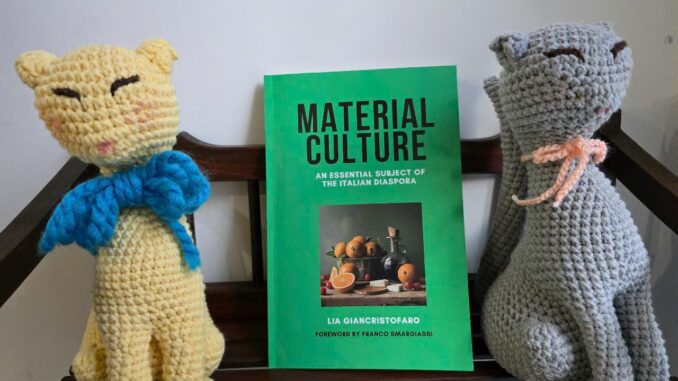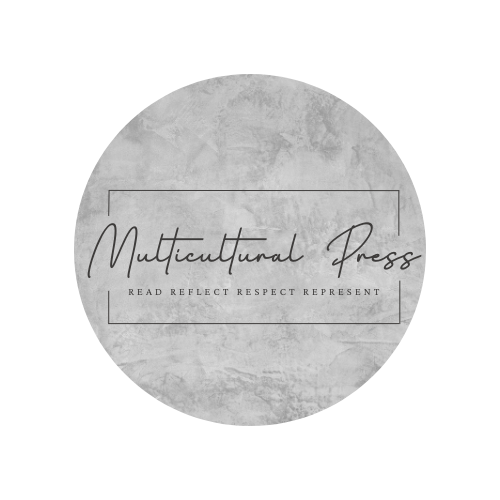
(Written by ERIS WHITE)
Book Review: Material Culture: An Essential Subject of the Italian Diaspora by Lia Giancristofaro
In Material Culture: An Essential Subject of the Italian Diaspora, Lia Giancristofaro, an esteemed Italian anthropologist affiliated with EHESS in Paris and holding a Ph.D. from the University “G. d’Annunzio” in Chieti-Pescara, offers a profound exploration into the tangible expressions of culture that define and sustain Italian communities worldwide. Published by Africa World Book Pty Ltd, this seminal work delves into the intricate ways in which everyday objects, domestic practices, and artisanal traditions serve as vital conduits of identity, heritage, and continuity within the Italian diaspora.
The book is structured into six meticulously researched chapters, each shedding light on different facets of material culture:
- Overview of Sustainable, Creative, and Popular Strategies in Domestic Life: This opening chapter sets the stage by examining how Italian families employ sustainable and creative methods in their daily domestic routines, reflecting a blend of tradition and innovation that characterizes their cultural resilience.
- A Qualitative Search on Domestic Manufacturing in Italy and in the Italian Diaspora: Here, Giancristofaro presents an ethnographic investigation into domestic manufacturing practices, highlighting how these activities not only fulfill practical needs but also reinforce cultural ties and communal bonds across generations and geographies.
- From Heritage Studies to Material Culture: Families and Economics: This chapter bridges the disciplines of heritage studies and material culture, exploring the economic dimensions of familial traditions and how they contribute to both personal livelihoods and the broader cultural economy.
- Clothes and Handmade Ornaments as Intergenerational Gifts: Giancristofaro delves into the significance of clothing and handcrafted ornaments exchanged within families, illustrating how these items serve as tangible symbols of love, memory, and cultural transmission.
- Pantry and Heritage in Saving Tomatoes for the Winter: Focusing on the practice of preserving tomatoes, this chapter reveals how culinary traditions encapsulate a wealth of cultural knowledge, embodying sustainability and a deep connection to ancestral practices.
- Creolizing Modernity: A Domestic Religion of Items and Food: The final chapter examines the fusion of modern influences with traditional domestic rituals, demonstrating how Italian diasporic communities adapt and reinterpret their cultural practices in new environments.
Titled “A New Idea of Folklore,” Giancristofaro challenges conventional notions of folklore by emphasizing its dynamic and evolving nature within contemporary settings. She argues that folklore manifests in everyday life through diverse and unofficial forms, necessitating renewed approaches to its study, particularly in the context of European diasporas. This perspective aligns with her advocacy for “collaborative ethnography,” a methodology inspired by American anthropologist Luke Eric Lassiter. This approach emphasizes the partnership between ethnographers and their subjects, transforming informants into consultants and co-creators of knowledge. Such collaboration enriches the research process, ensuring that the voices and experiences of the community are authentically represented.
The foreword by Franco Smargiassi provides a personal and historical context to the themes explored in the book. Reflecting on his upbringing in Vasto, a city in the Abruzzi region of central Italy, Smargiassi recounts the pivotal moment in 1988 when Australian Prime Minister Bob Hawke declared Australia a multicultural nation—a day that marked his own cultural awakening and the adoption of the name Franco. His narrative underscores the multifaceted cultural experiences that shape the identities of those within the Italian diaspora.
Giancristofaro’s expertise in cultural anthropology and ethnography is evident throughout the text. Her focus on handwork, creativity, sustainability, and folklore offers readers a comprehensive understanding of how material culture functions as a repository of collective memory and a medium for cultural innovation. By documenting and analyzing these practices, she not only preserves the rich tapestry of Italian diasporic life but also provides valuable insights into the broader human experience of migration and cultural adaptation.
In conclusion, Material Culture: An Essential Subject of the Italian Diaspora is a significant contribution to the study of cultural practices within migrant communities. Giancristofaro’s in-depth analysis and collaborative approach illuminate the enduring importance of material culture in maintaining and evolving cultural identity. This work is essential reading for scholars, students, and anyone interested in the intersections of culture, migration, and everyday life.

